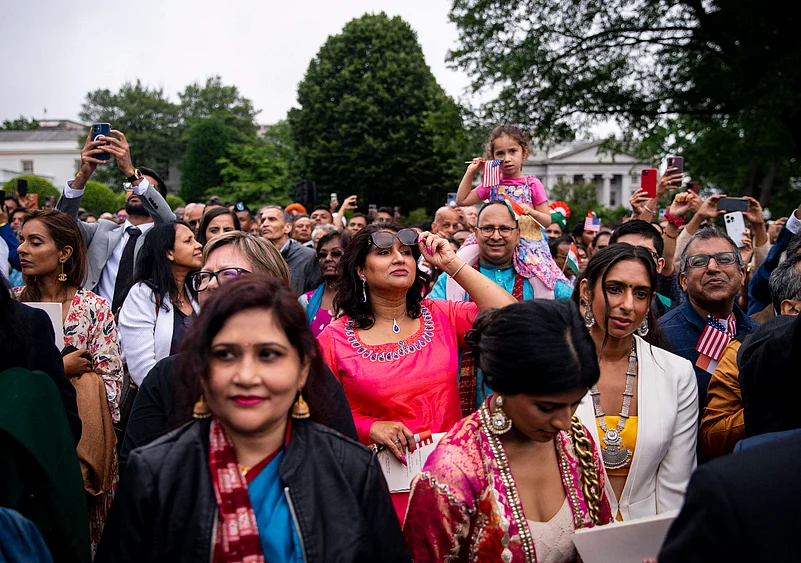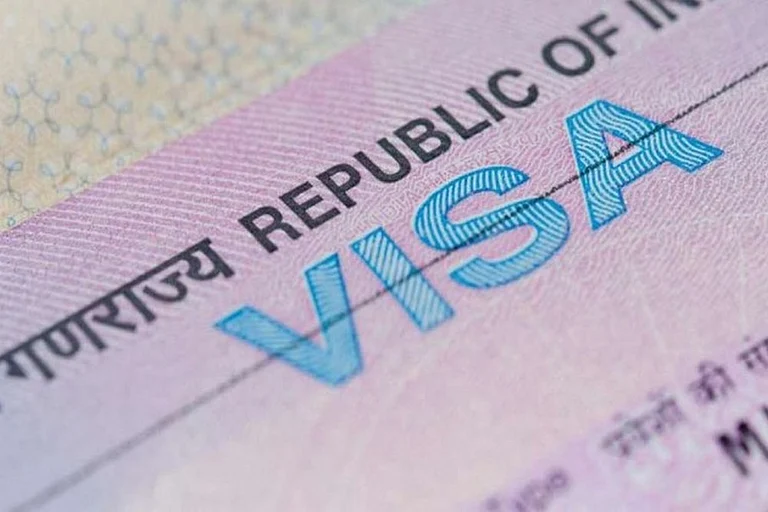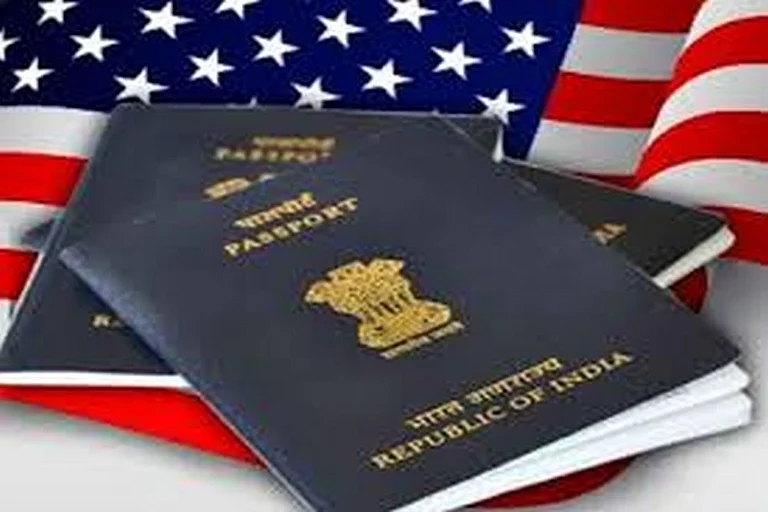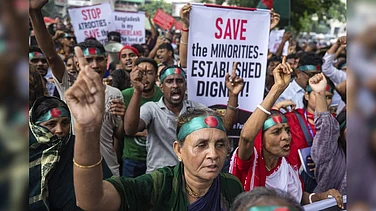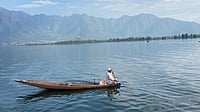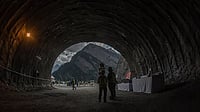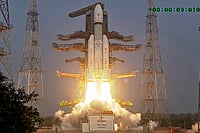
President Donald Trump’s September 19, 2025 proclamation imposing a $100,000 fee on new H-1B visa petitions has triggered deep anxiety among the Indian diaspora, which accounts for over 70% of approvals.
The new policy threatens the traditional pipeline from Indian students to permanent residency, raising doubts about U.S. education’s returns and forcing Indian IT firms and families dependent on remittances to reassess their futures.
In October 2024, on a direct flight from Newark to New Delhi, I struck up a conversation with a 32-year-old professional during one of those informal gatherings near the aisle, when passengers stand up to stretch and exercise. Coincidentally, his first name was also Luv, and he was from Delhi. He was wrestling with a dilemma: whether to continue in the United States or return to India. On his way home to get engaged, he had been diligently saving every month for the past three years. Yet, despite this discipline, he saw little scope for salary progression or meaningful career growth. The uncertainty of his future was palpable.
Recently, a Bangladeshi-origin technology entrepreneur and a long-time friend in New York told me he had been forced to lay off 19 of his 22 employees, retaining only three. His verdict was blunt: “The change is perceptible. AI is rewriting the rules.” Even large corporations are not immune. Salesforce, emblematic of the tech industry’s resilience, reportedly announced layoffs recently citing restructuring in the wake of rapid technological change.
For more than two-decades, the Indian diaspora, colloquially known as the desi community, in the United States has been celebrated as a success story. From Silicon Valley to Wall Street, from university campuses to start-up hubs, Indian-origin professionals became a byword for hard work and achievement. This success story has been central not only to diaspora self-perceptions but also to how India projects itself abroad.
Yet, that sheen of acceptance has started dull with the wider technological changes taking place at an exponential speed that is eliminating the roles for many of these engineers. This is coupled by the latest blow that came on September 19, 2025, when U.S. President Donald Trump who signed a proclamation imposing a $100,000 fee on new H-1B visa petitions. Though it exempts current visa holders and renewals, the measure marks a dramatic escalation in Washington’s immigration policy.
For the Indian diaspora, overwhelmingly the largest beneficiary of the H-1B programme, the decision has generated deep anxiety. U.S. Commerce Secretary Howard Lutnick underlined this shift when he announced there will be “a significant number of changes” in the H-1B visa process before February 2026, when the new $100,000 fee goes into effect. He described as “just wrong” the idea of “inexpensive” tech consultants coming into the country and bringing their families — remarks that cut to the heart of the long-simmering resentment against Indian professionals.
Over 70 per cent of new H-1B approvals in recent years have gone to Indians. In absolute terms, there is an annual pipeline of at least fresh batch of 50,000 Indians every year to the US on this visa with most of them are engineers. Entire state economies in India, particularly some of the southern states, depend on remittances from Indian professionals in the U.S. Indian IT firms, which use H-1Bs to staff client projects, will also face cost shocks and may be forced to relocate more work offshore.
There is also an uncomfortable truth often whispered by insiders: the H-1B system has long been tilted towards cost arbitrage. Many firms hire Indian workers less for elite talent than for the simple reason that they accept lower wages than American counterparts. The beneficiaries are not always graduates of India’s top institutions but a broader workforce willing to work at cheaper rates. This has fueled resentment in the U.S., where critics argue that the programme depresses wages for domestic workers. And now with the AI eliminating the need for much of the routine engineering work even this incentive is less to hire Indian tech workers as there is further progress in this field.
For years, the H-1B visa had also symbolised a pathway for another segment : from student life under an F-1 visa, to temporary work through Optional Practical Training, and eventually to H-1B status with the possibility of permanent residency. The new fee will shake confidence in that pathway. Mid-sized American firms are unlikely to absorb such costs, while students investing heavily in the U.S. education may no longer find the returns viable. The goalposts of opportunity have shifted. For many young Indians engineers considering higher education in the United States, the calculation may change: the U.S. may no longer a guaranteed stepping stone to long-term settlement.
The H-1B pathway has produced a skewed pattern of Indian immigration to the US over the past two decades. The overwhelming number of applicants from technology backgrounds has effectively clogged the route to permanent residency for Indians. Under U.S. immigration law, every country, large or small, is capped at just seven per cent of total employment-based green cards issued each year. This “per-country ceiling” treats India, with its vast pool of applicants, the same as countries with negligible demand because of low population.
As a result, the backlog for green cards under the EB-2 and EB-3 categories is so severe that many Indian professionals face waits of a decade or more before their cases are processed. Unless they qualify under the highly competitive EB-1 category, reserved for those with “extraordinary ability,” or marry a U.S. citizen, most remain in limbo. Even for EB-1 applicants whose petition has been cleared, the queue can stretch for some time, simply because of the sheer volume of Indians, mostly from technological arena, in the system already cleared. And thus their green card is delayed or what is called final status adjustment. Ironically, this means that some of India’s most accomplished professionals such as academics, scientists, researchers and other fields are left waiting. This is not for lack of merit, but because of the crowded pipeline created by mass migration in the tech sector.
Beyond visas and backlogs, there is a larger societal dimension that receives far less attention: the changing dynamics within the U.S. society itself. The current societal changes underway in the United States have already been examined extensively and need no further reiteration.
However, there is another vector worth examining. Most immigration of the last two-decade from India has been technology-driven, producing a diaspora heavily concentrated in engineering and IT, with relatively little presence in the social sciences or humanities. The current deepening polarization in Indian society is mirrored, and at times magnified, within the diaspora.
Indian professionals are no longer merely criticised for “taking American jobs” but increasingly targeted by social media narratives that conflate immigration, cultural change, and politics. Success in technology, once admired, is now accompanied by a sense of unease about visibility and influence. What makes the current moment distinct is not just the cost of the visa but the sentiment it reflects. The Indian diaspora, long praised as a model minority, now finds itself caught between admiration and resentment. Against this backdrop, the Trump administration’s decision feels not merely administrative but emblematic: a signal that Indian-origin professionals, however successful, are not indispensable. Amid the uncertainty, some potential opportunities emerge.
The Indian diaspora stands at a crossroads. The infusion of Artificial Intelligence and broader societal shifts in the United States may accelerate the return of skilled professionals to India. Or at the very least, slow the annual large-scale outflow of engineers to the U.S.
If harnessed effectively, this trend could strengthen India’s own technology ecosystem. Yet, the bitter backlash of the last few days on social media to the statements of political elite and former bureaucrats, where they framed this as an “opportunity” even as many of their own children reside in the U.S., exposed public frustration. While individual choices about migration are personal, statements must be backed by concrete measures. For India to truly benefit from this changing dynamic, it must create a first-rate working environment that makes return migration a genuine, attractive option.
As the flight from New York descended into Delhi that October night, Luv’s uncertainty lingered with me. His story, at once personal and emblematic, captured the wider anxieties of a generation standing on shifting ground. The dilemmas faced by individuals like him, whether to persist in America or return to India, are not isolated choices but reflections of larger structural forces: technology rewriting industries, immigration laws narrowing opportunities, and India’s own unfinished project of building an economy that can absorb its talent. In their decisions lie not only private futures but also the contours of India’s place in a world where mobility, identity, and ambition are being profoundly redefined. Given India’s vast population, migration will remain a constant feature of its story. The real question is whether it continues to be driven by necessity or evolves into a voluntary choice, fueled by confidence in India’s own growth model.






